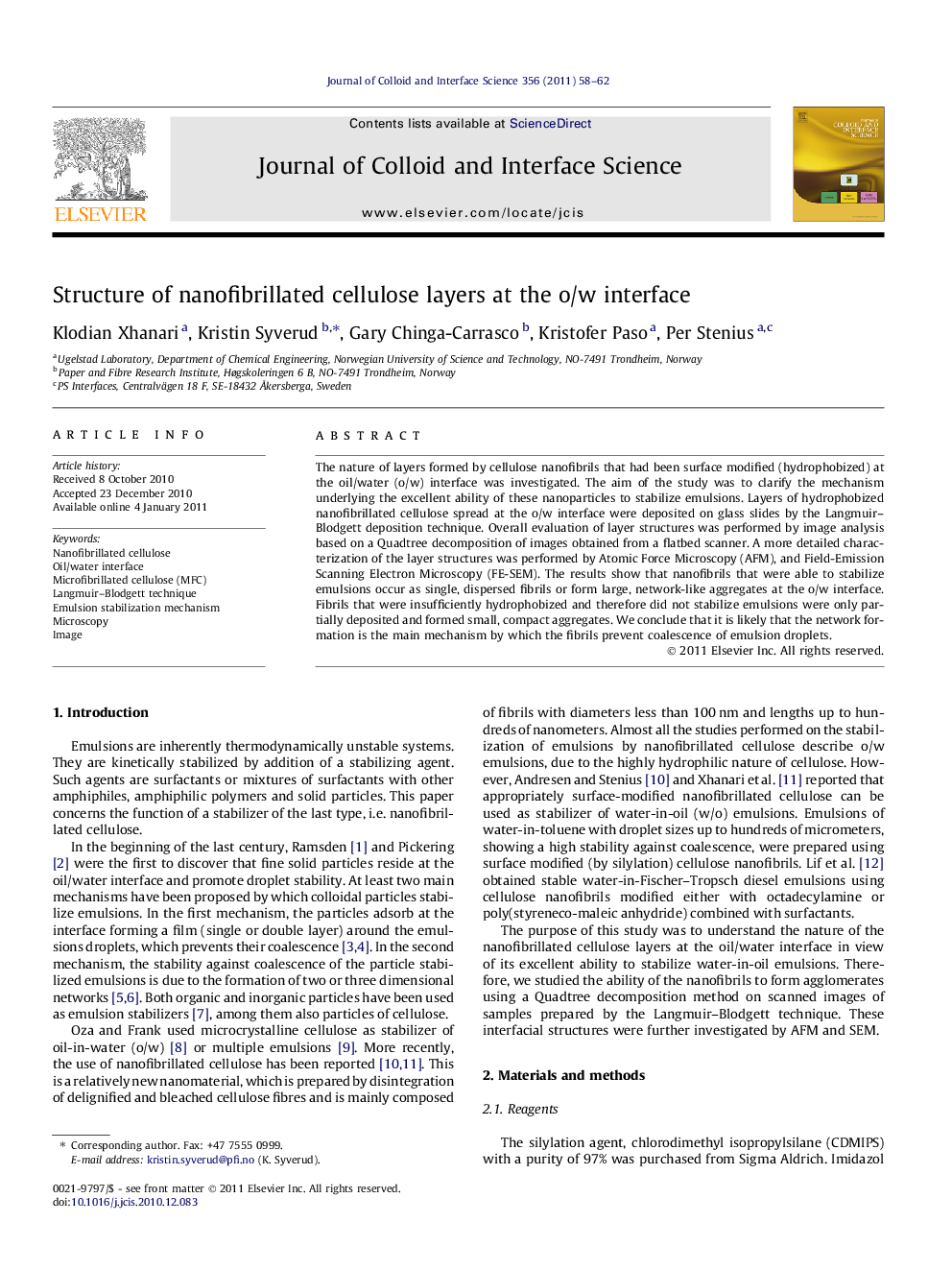| Article ID | Journal | Published Year | Pages | File Type |
|---|---|---|---|---|
| 608702 | Journal of Colloid and Interface Science | 2011 | 5 Pages |
The nature of layers formed by cellulose nanofibrils that had been surface modified (hydrophobized) at the oil/water (o/w) interface was investigated. The aim of the study was to clarify the mechanism underlying the excellent ability of these nanoparticles to stabilize emulsions. Layers of hydrophobized nanofibrillated cellulose spread at the o/w interface were deposited on glass slides by the Langmuir–Blodgett deposition technique. Overall evaluation of layer structures was performed by image analysis based on a Quadtree decomposition of images obtained from a flatbed scanner. A more detailed characterization of the layer structures was performed by Atomic Force Microscopy (AFM), and Field-Emission Scanning Electron Microscopy (FE-SEM). The results show that nanofibrils that were able to stabilize emulsions occur as single, dispersed fibrils or form large, network-like aggregates at the o/w interface. Fibrils that were insufficiently hydrophobized and therefore did not stabilize emulsions were only partially deposited and formed small, compact aggregates. We conclude that it is likely that the network formation is the main mechanism by which the fibrils prevent coalescence of emulsion droplets.
Graphical abstractSufficiently surface modified (hydrophobized) nanofibrillated cellulose stabilize water-in-toluene emulsions against coalescence by network formation at the o/w interface.Figure optionsDownload full-size imageDownload high-quality image (323 K)Download as PowerPoint slideResearch highlights► At o/w interface cellulose nanofibrils can occur as single dispersed or form networks. ► Network formation by cellulose nanofibrils at o/w interface prevents coalescence. ► Network formation by nanofibrillated cellulose depends on degree of substitution.
